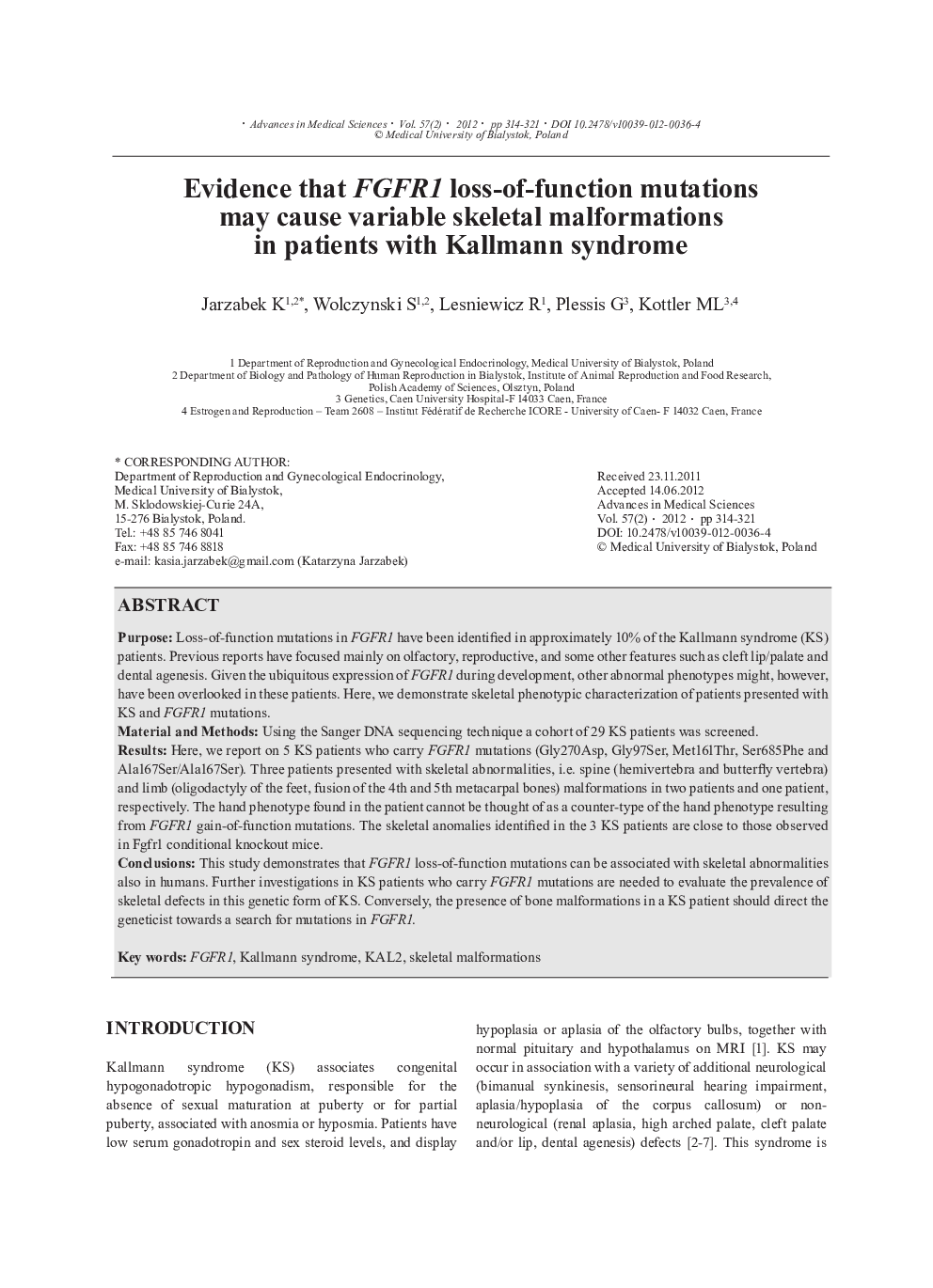| Article ID | Journal | Published Year | Pages | File Type |
|---|---|---|---|---|
| 2032247 | Advances in Medical Sciences | 2012 | 8 Pages |
ABSTRACTPurposeLoss-of-function mutations in FGFR1 have been identified in approximately 10% of the Kallmann syndrome (KS) patients. Previous reports have focused mainly on olfactory, reproductive, and some other features such as cleft lip/palate and dental agenesis. Given the ubiquitous expression of FGFR1 during development, other abnormal phenotypes might, however, have been overlooked in these patients. Here, we demonstrate skeletal phenotypic characterization of patients presented with KS and FGFR1 mutations.Material and MethodsUsing the Sanger DNA sequencing technique a cohort of 29 KS patients was screened.ResultsHere, we report on 5 KS patients who carry FGFR1 mutations (Gly270Asp, Gly97Ser, Met161Thr, Ser685Phe and Ala167Ser/Ala167Ser). Three patients presented with skeletal abnormalities, i.e. spine (hemivertebra and butterfly vertebra) and limb (oligodactyly of the feet, fusion of the 4th and 5th metacarpal bones) malformations in two patients and one patient, respectively. The hand phenotype found in the patient cannot be thought of as a counter-type of the hand phenotype resulting from FGFR1 gain-of-function mutations. The skeletal anomalies identified in the 3 KS patients are close to those observed in Fgfr1 conditional knockout mice.ConclusionsThis study demonstrates that FGFR1 loss-of-function mutations can be associated with skeletal abnormalities also in humans. Further investigations in KS patients who carry FGFR1 mutations are needed to evaluate the prevalence of skeletal defects in this genetic form of KS. Conversely, the presence of bone malformations in a KS patient should direct the geneticist towards a search for mutations in FGFR1.
